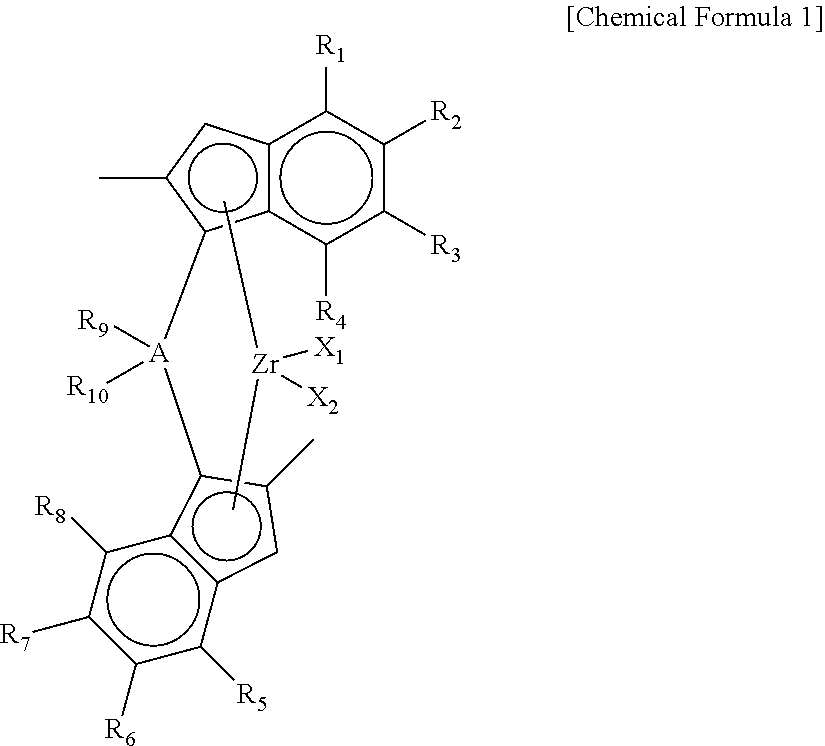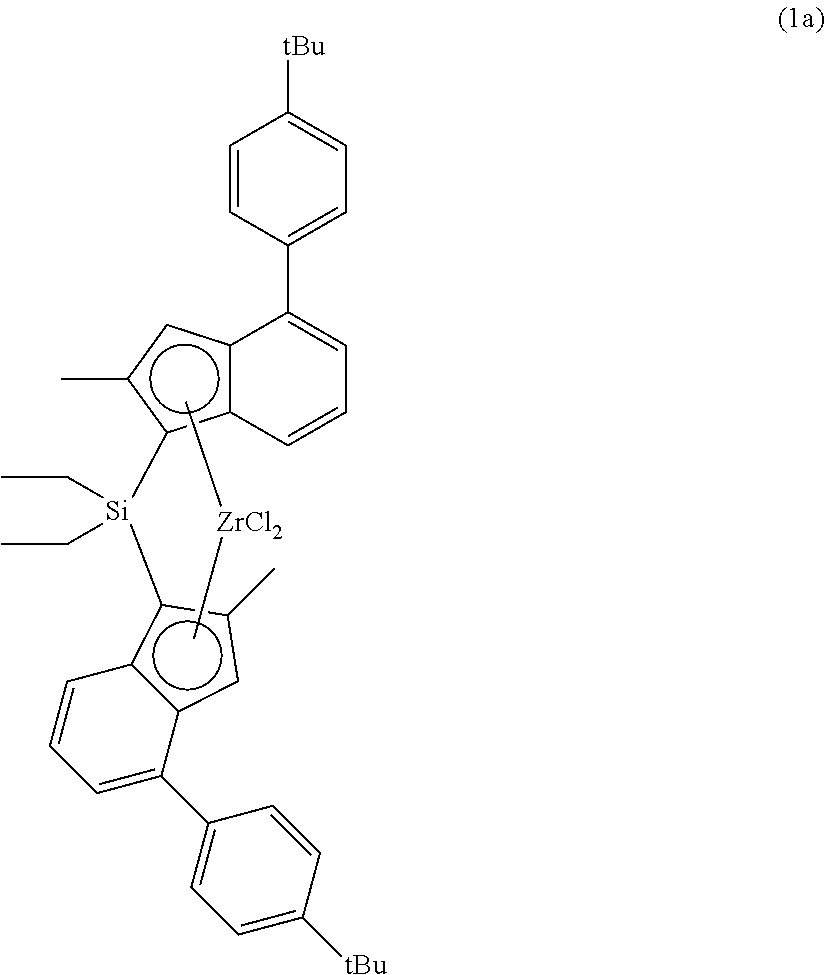Polypropylene and method for preparing the same
a polypropylene and polyethylene technology, applied in the field of polypropylene and method for preparing the same, can solve the problems of deterioration of physical properties, limitation of securing desired physical properties, and deterioration of processability, and achieve excellent processability, low residual stress ratio, and uniform thickness.
- Summary
- Abstract
- Description
- Claims
- Application Information
AI Technical Summary
Benefits of technology
Problems solved by technology
Method used
Image
Examples
preparation example 1
Step 1) Preparation of (diethylsilane-diyl)-bis(2-methyl-4-(4-tert-butyl-phenyl)indenyl)silane
[0105]2-methyl-4-tert-butyl-phenylindene (20.0 g) was dissolved in a toluene / THF solution at a volume ratio=10 / 1 (220 mL), an n-butyllithium solution (2.5 M, a hexane solvent, 22.2 g) was slowly added dropwise thereto, and stirring was performed at room temperature for a day. To the resulted mixed solution, diethyldichlorosilane (6.2 g) was slowly added dropwise at −78° C., stirred for about 10 minutes, and further stirred at room temperature for a day. Thereafter, water was added to separate an organic layer, and the solvent was distilled off under reduced pressure to obtain (diethylsilane-diyl)-bis(2-methyl-4-(4-tert-butyl-phenyl)indenyl)silane.
Step 2) Preparation of [(diethylsilane-diyl)-bis(2-methyl-4-(4-tert-butyl-phenyl)indenyl)]zirconium Dichloride
[0106](Diethylsilane-diyl)-bis(2-methyl-4-(4-tert-butyl-phenyl)indenyl)silane prepared in step 1 was dissolved in a toluene / THF solution a...
preparation example 2
[0109]A silica-supported metallocene catalyst was prepared in the same manner as in step 3 of Preparation Example 1, except that diethylsilandiyl(2-ethyl-4-(4′-tert-butyl-phenyl)-indenyl) (2-methyl-4-(4′-tert-butyl-phenyl)indenyl)zirconium dichloride was used, instead of the transition metal compound prepared in step 2 of Preparation Example 1.
preparation example 3
[0110]A silica-supported metallocene catalyst was prepared in the same manner as in step 3 of Preparation Example 1, except that dimethylsilanediyl bis(2-methylindenyl)zirconium dichloride) was used, instead of the transition metal compound prepared in step 2 of Preparation Example 1.
PUM
 Login to View More
Login to View More Abstract
Description
Claims
Application Information
 Login to View More
Login to View More - R&D
- Intellectual Property
- Life Sciences
- Materials
- Tech Scout
- Unparalleled Data Quality
- Higher Quality Content
- 60% Fewer Hallucinations
Browse by: Latest US Patents, China's latest patents, Technical Efficacy Thesaurus, Application Domain, Technology Topic, Popular Technical Reports.
© 2025 PatSnap. All rights reserved.Legal|Privacy policy|Modern Slavery Act Transparency Statement|Sitemap|About US| Contact US: help@patsnap.com



